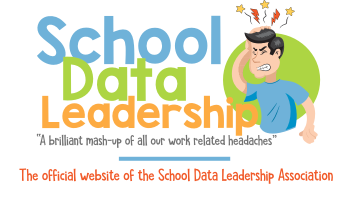Address achievement and opportunity disparities between student groups, with attention to those with special needs; cultural, racial, and linguistic differences; and disadvantaged socio-economic backgrounds.
This standard highlights the importance of addressing disparities in achievement and opportunities among different student groups, particularly focusing on those with special needs, cultural, racial, and linguistic differences, as well as disadvantaged socio-economic backgrounds. Here's how this standard can be further expanded upon:
-
Equitable Resource Allocation: Ensure that resources such as funding, staffing, instructional materials, and facilities are distributed equitably among schools and classrooms serving diverse student populations.
-
Culturally Relevant Curriculum: Develop and implement curriculum that reflects the cultural backgrounds, experiences, and perspectives of all students.
-
Linguistically Responsive Instruction: Implement instructional strategies that support students who are English language learners (ELLs) or speak languages other than English at home.
-
Special Education Services: Ensure that students with special needs receive the appropriate support and accommodations to access the curriculum and achieve their academic goals.
- Resource: Council for Exceptional Children (CEC)
- Resource: Council for Exceptional Children (CEC)
-
Universal Design for Learning (UDL): Implement principles of Universal Design for Learning to create inclusive learning environments that accommodate diverse learner needs.
- Resource: CAST: Universal Design for Learning
- Resource: CAST: Universal Design for Learning
-
Trauma-Informed Practices: Recognize and address the impact of trauma and adverse childhood experiences on student learning and behavior.
-
Social-Emotional Learning (SEL): Integrate social-emotional learning into the curriculum to support the holistic development of students.
-
Family and Community Partnerships: Engage families and communities as partners in addressing achievement and opportunity disparities.
-
Data-Informed Decision Making: Use data to identify disparities in achievement and opportunities among student groups and inform decision-making processes.
-
Professional Development: Provide ongoing professional development for educators to build cultural competency and learn effective strategies for supporting diverse student populations.
By addressing achievement and opportunity disparities between student groups and attending to the needs of those with special needs, cultural, racial, and linguistic differences, as well as disadvantaged socio-economic backgrounds, educators can create more equitable and inclusive learning environments where all students have the opportunity to thrive.
Additional Resources/Ideas:
Addressing achievement and opportunity disparities among student groups requires a multifaceted approach that encompasses understanding and addressing the needs of students with special needs, as well as those from diverse cultural, racial, linguistic, and socio-economic backgrounds. Here are some practical strategies that educators can implement:
-
Differentiated Instruction: Tailor teaching methods to accommodate different learning styles and levels of readiness. This might involve varying the complexity of tasks, providing different types of support, or using diverse instructional materials that resonate with students from various backgrounds.
-
Culturally Responsive Teaching: Integrate cultural references in teaching to make learning more relevant and engaging for students from diverse cultural backgrounds. This approach not only helps in bridging cultural gaps but also enriches the learning experience for all students by promoting a broader understanding of the world.
-
Inclusive Curriculum Design: Ensure that the curriculum reflects a wide range of cultures, histories, and perspectives. This involves incorporating texts and resources that represent a variety of racial and ethnic backgrounds, which can help all students see themselves reflected in their learning materials.
-
Professional Development on Equity and Inclusion: Provide ongoing training for teachers on topics such as implicit bias, cultural competence, and strategies for teaching English language learners and students with disabilities. Equipping teachers with these skills is crucial for fostering an inclusive classroom environment.
-
Data-Driven Decision Making: Utilize data to identify gaps in achievement and access. Regular assessment and analysis can help pinpoint areas where specific groups may be underperforming and allow for targeted interventions.
-
Community and Family Engagement: Strengthen partnerships with families and community organizations. These relationships can support learning by connecting educational content to students' real-world experiences and providing additional resources for learning outside of school.
-
Socio-Emotional Support: Implement programs and practices that support the socio-emotional well-being of students. Recognizing and addressing the emotional and social challenges that students from disadvantaged backgrounds may face can help in reducing stress and improving academic outcomes.
-
Flexible Grouping: Use flexible and diverse group configurations that allow students to work with peers from different backgrounds. This can help reduce stereotypes and bias while promoting a collaborative and inclusive learning environment.
-
Accessibility and Accommodations: Ensure that all learning materials and activities are accessible to students with special needs. This includes providing appropriate accommodations and modifications to support these students' unique learning needs.
-
Monitoring and Accountability: Regularly review the effectiveness of diversity and inclusion initiatives and make adjustments as needed. Accountability mechanisms should be in place to ensure that all students have equitable access to high-quality education.
